Project2-Research about people who project stray animals
The first reason why I wanted to research people who protect stray animals is that stray animals are becoming more and more common. A reasonable solution for stray animals has become a topic of great interest. Therefore I noticed the people who protect stray animals. From there I wanted to find out what motivates their behaviour, the difficulties they encounter, etc. Then I thought about how to conduct my research. I thought I should go from the whole to the parts. Collect information to understand the background of people who protect stray animals. Then use secondary research, interviews etc. to determine the characteristics of the group.

Here is the research on this project.
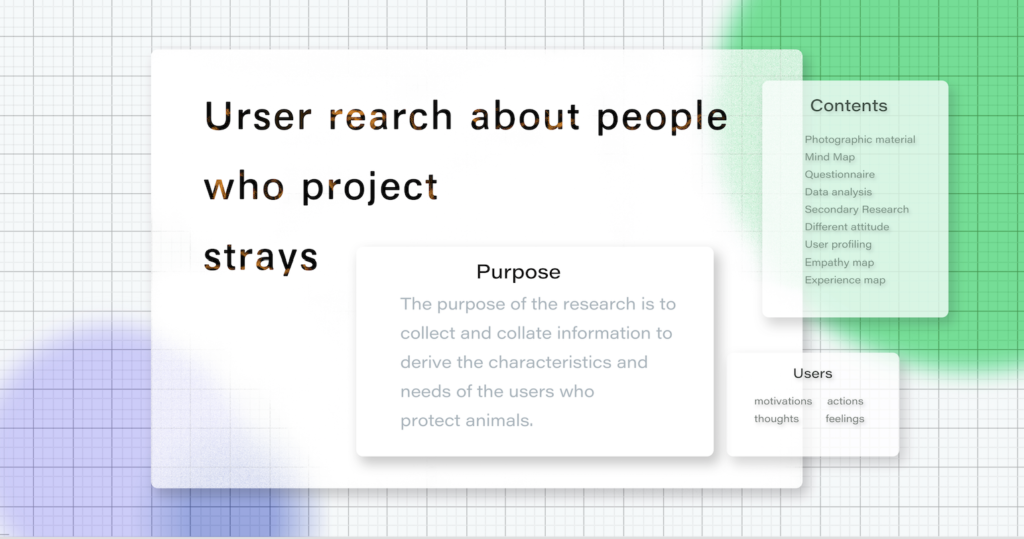
Photo credits
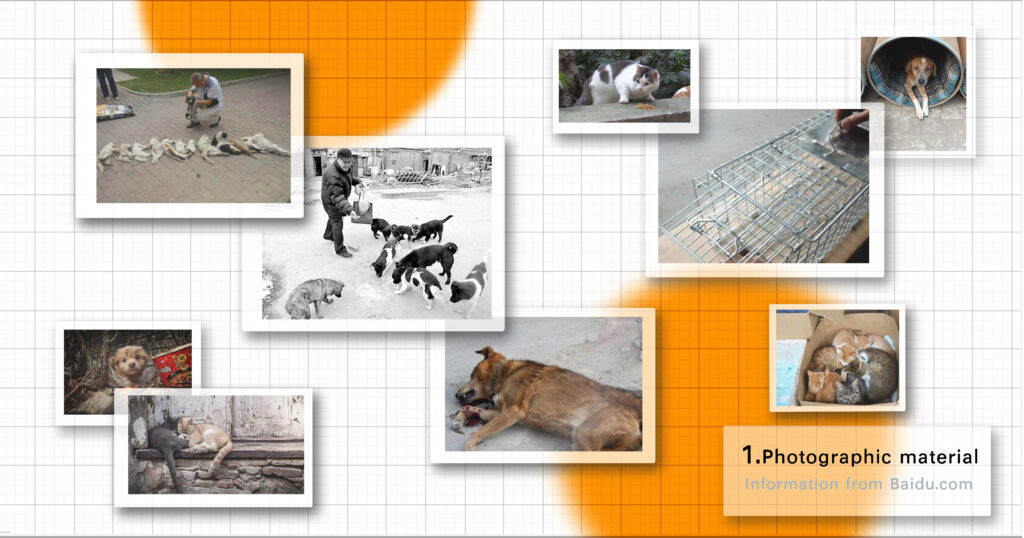
A number of key words were obtained from the information. From these words I got some basic behaviours of this group. The environment associated with these behaviours etc.


Then some data was obtained by means of a questionnaire. In the questionnaire I set detailed questions about the age and gender of the group, their main behaviour, their views on stray animals etc. The big data allowed the analysis of the elements of this group.
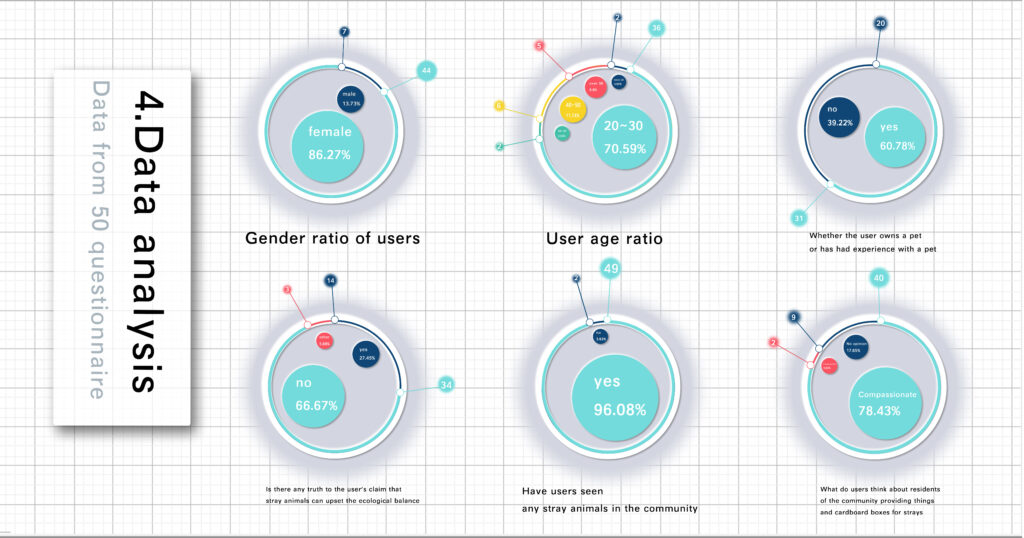
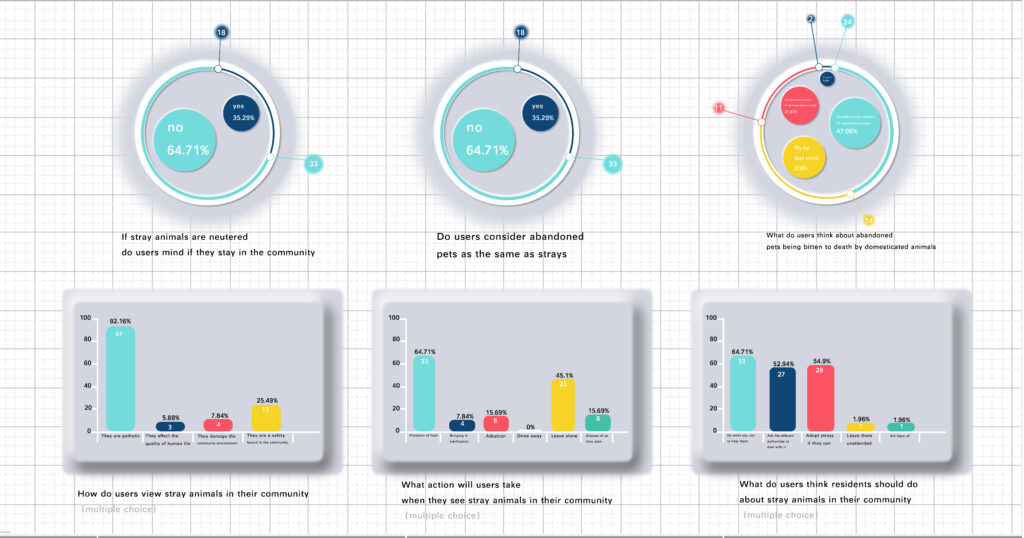
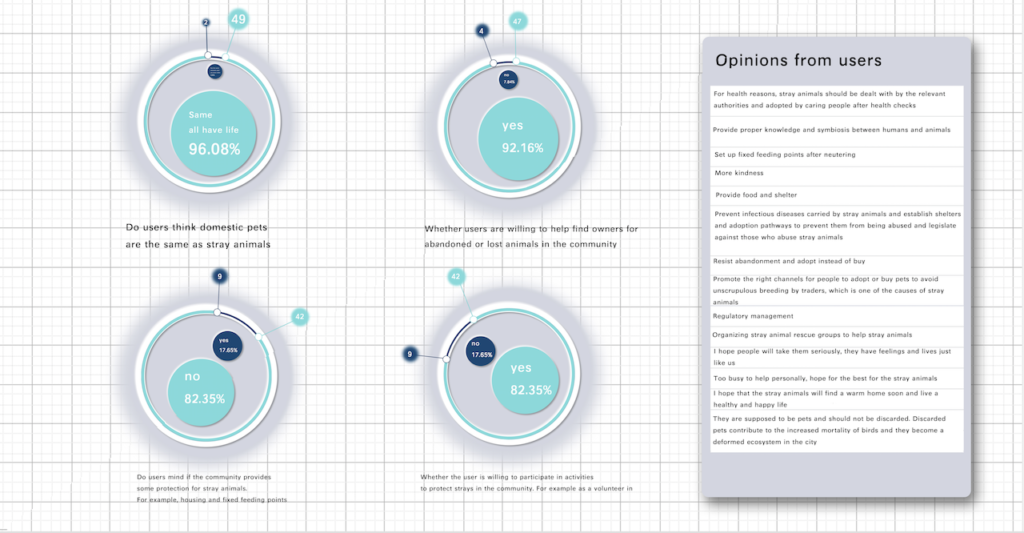
After getting the basic information about the group. I used secondary research methods to analyse what treatment of stray animals was available to them through the data on stray animal disposal options. And why they chose to give food as a way to protect the animals.
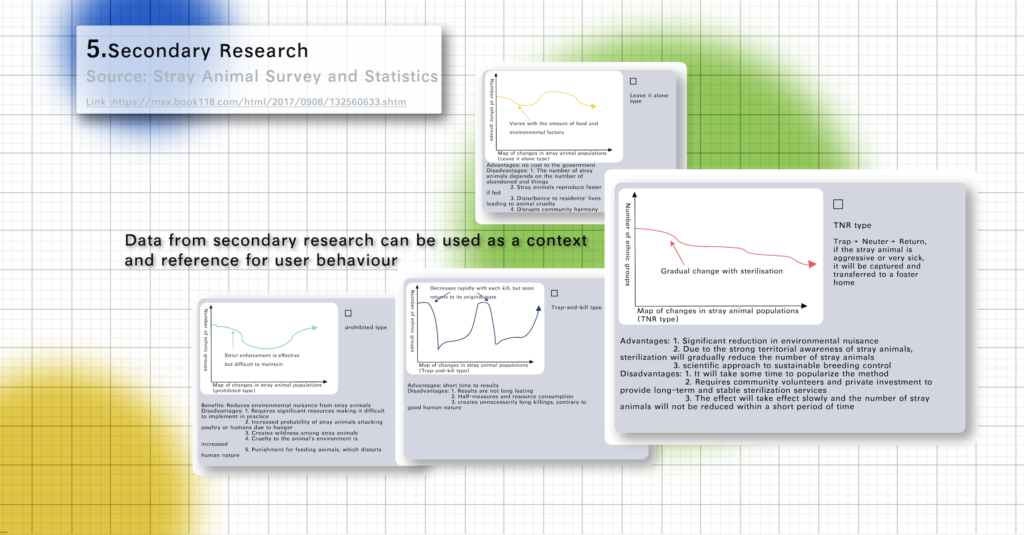
I ended up listening to the stories of this group and stray animals through one-to-one interviews. Delving into their lives and thinking differently about what role they play in the story. What led to their protective behaviour towards stray animals.
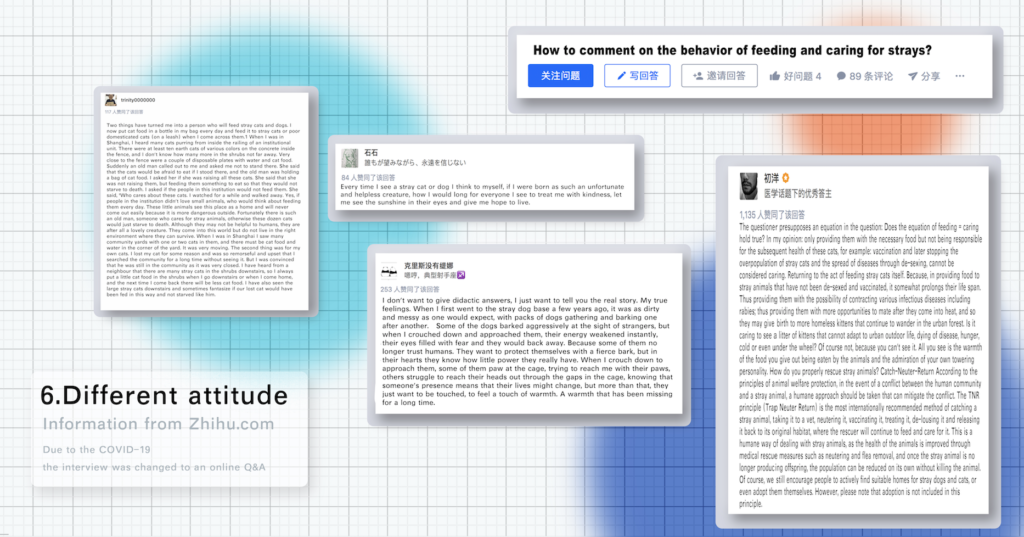
From the interviews, I found four different attitudes towards the protection of stray animals. They are the sensible type. Emotional transference type. The responsible type. And the casual type.
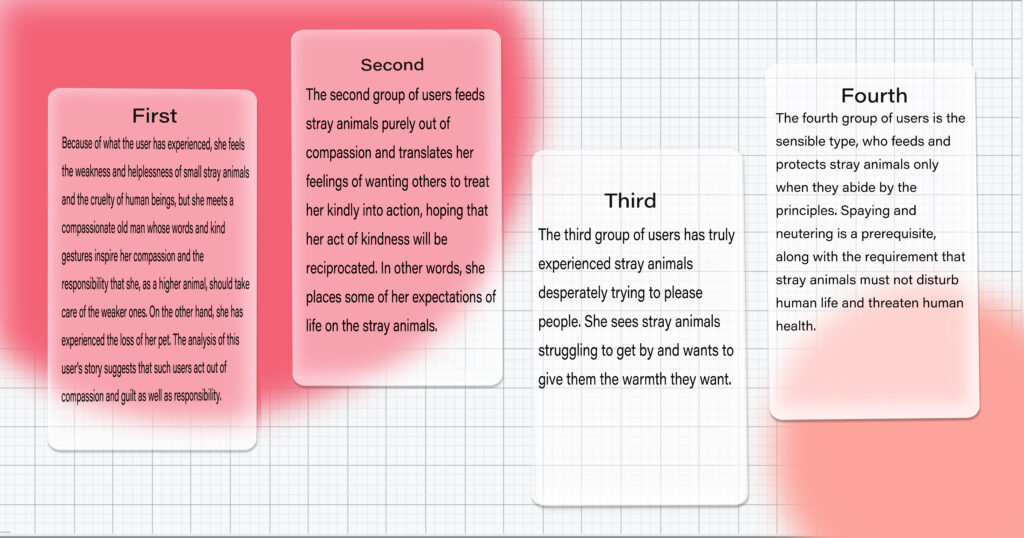
Data and information about the group was collected based on the previous research. From this, it was found that their pain point is that there is no better way to help stray animals.
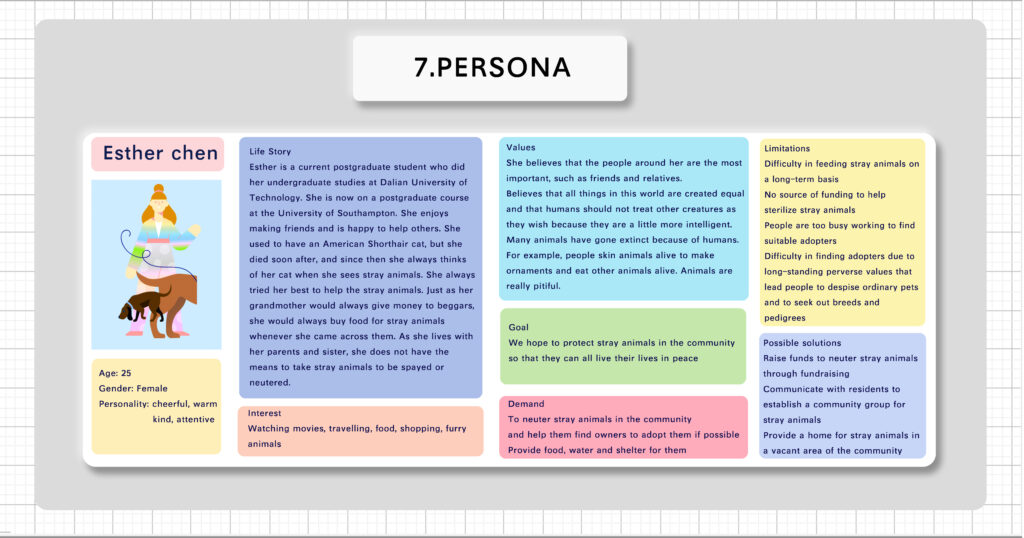
An empathy map was created to simulate the four aspects of seeing, hearing and thinking when this group protects stray animals, as well as some ideas. A bandwagon approach was used to think differently.
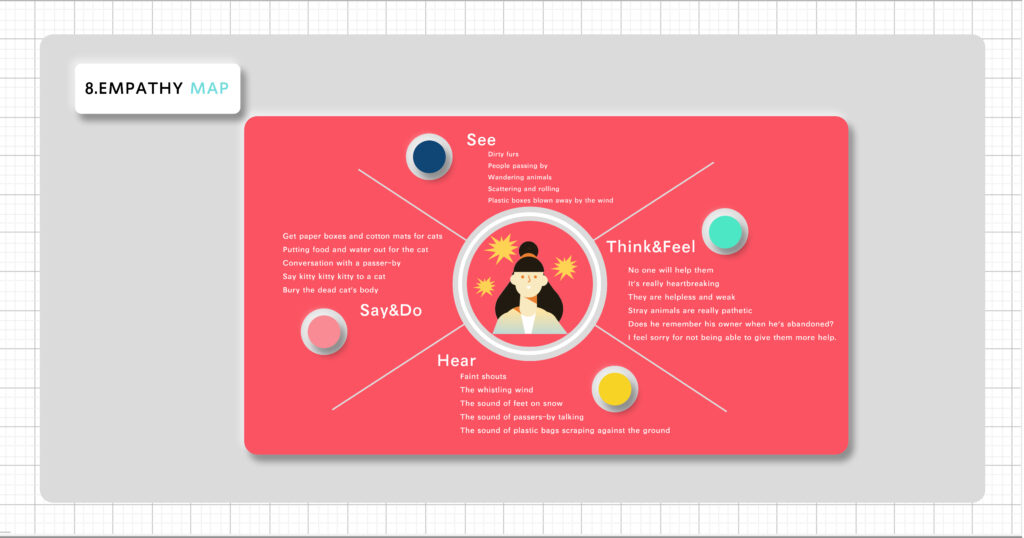
The preceding series of research has led to three patterns of behaviour in this group. One will provide food for stray animals and one will provide shelter for stray animals. Their pain point is that they do not have enough money to support them to protect stray animals in a more reasonable way. For example, the animals are neutered. To radically reduce the increase in the number of stray animals.

From this project I learned about the diversity of research methods. The appropriate method should be used to conduct the research. Due to the influence of COVID-19, my research was mostly based on online data collection and interviews etc. The questionnaires are therefore somewhat limited. Therefore the analysis of the pain points of the group was not very accurate. This is something I need to be aware of in my next research.
